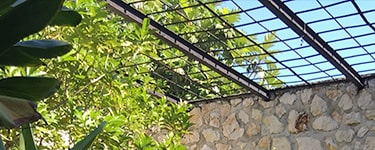Blog

Helping Burn Survivors Regain Function And Rejoin Their Communities
Designing Splints for the Developing World
Guest Blog by Bryan Quintanilla, Lead Engineer, HandHero
When we come home, turn on the lights, turn on the heater, and prepare dinner on the stovetop, we don’t think twice about doing it. In Nepal and other developing countries simple tasks are quite different, and most households use dangerous open flames to cook, light and heat their homes. The result is more cases of severe burn injuries than those of tuberculosis and HIV combined, and three times more burn-related deaths among children and young people than malaria. Those that do survive are often stigmatized. That’s where ReSurge International comes in, a non-profit dedicated to providing reconstructive surgery for people in developing countries.
At the beginning of the year, ReSurge partnered with several teams in a class at Stanford University’s design school called Design for Extreme Affordability. Design for Extreme Affordability or “Extreme” as many fondly call it, is a course that connects students with global partners to develop solutions to problems facing people who live on around $2 a day. After being paired with a global partner, a student team’s first step is to understand the lives and needs of the people for whom they are designing. Once students establish empathy with the people they are designing for, teams choose to focus on a particular need and design a product or service around this need. While many projects are handed back to the partner organization at the end of the course, several teams decided to continue developing their product or service over the summer. That’s where I come in.
At the beginning of this summer, I was hired as the lead engineer by a team working on a product called HandHero™, a low-cost, static progressive hand splint for post-surgical burn patients. If that doesn’t make sense, let me try to explain with an example.
When someone has a severe deep-tissue burn on their palm, if they do not receive appropriate physical therapy, the scar tissue that forms will contract and their skin will tighten until their fingers clench into an immovable fist. Each year ReSurge provides skin graft and reconstructive surgery for hundreds of burn victims at no cost. Unfortunately, many of the patients come from far away and are unable to return for follow up visits and do not receive physical therapy after their initial visit. As a result many burns recontract and patients must return for follow up surgery. Additionally, burn survivors often have trouble rejoining their communities due to the stigma associated with burns.
The HandHero splint is designed to change this pattern. In addition to being cheaper and easier to make than the current thermoplast splints, HandHero can be adjusted easily by the patient according to a treatment plan without the need for a follow up visit.
The Original Hand Hero Team
The HandHero team originally was composed of four members: Jana Lim a neuroscience Ph.D, second year med student Kimberly Souza, and MBA students Maria Langat and David Adams. Following a visit to Nepal, one of ReSurge’s many locations, this team came up with the idea for and developed a basic working prototype for the splint. Their goal was to help young Nepali burn survivors, facing disability even after surgery, rebuild function and rejoin their communities. After receiving funding from the Social Entrepreneurship Lab at Stanford’s Graduate School of Business, fellow engineer Michael Beck and I were hired to help develop, design, and manufacture a working splint as well as a patient education program before a clinical trial in December.
After first we focused on developing a mechanism to treat contractures at each finger joint. We met with a range of physical and occupational therapists to get advice on our project and prototypes. Their wisdom combined with the feedback from user testing has helped us to improve the splint’s comfort, fit, function, and ease of use, and to create a comprehensive, yet compact and easy to understand patient education program.
However, because this feedback is meaningless without validation from doctors and patients in developing countries, we have sent a prototype to China, India, and Nepal, where team members have received feedback from surgeons, physical therapists, and burn survivors.
In December our team will return to Nepal to perform a clinical trial of HandHero and deepen our understanding of the culture for which we’re designing. While we’ve come a long way in making Hand Hero real, we are continuing to work on lowering the cost of our splint (currently just under $20), designing it for mass manufacturing, making it as user-friendly as possible, and fully developing our patient education program so that our product fits the needs of doctors and patients.
Our goal of creating a splint that helps burn survivors successfully return to their communities is in sight, but there is still work to be done.
Barco’s Nightingales is proud to support ReSurge International and we salute these young entrepreneurs for their commitment to changing lives.
